A leading UFO debunker has revealed the bizarre case that still baffles him to this day.
Over the years, dozens of people, including military experts, have recorded chilling videos that appear to show UAPs (unidentified aerial phenomena) and often seek answers by posting them online.
Mick West of Sacramento, California, uses a variety of tools to help explain these mysteries, but he has been left stumped by a Navy video of a UFO that was leaked by The New York Times.
The images released in 2017 had been taken by a Navy F/A-18 Super Hornet pilot two years earlier and appear to show a UFO following the plane from the USS Theodore Roosevelt after the object had been detected by radar off the East Coast.
In the infrared cockpit video, the incredible high-speed object seemingly breaks the laws of physics, and the two pilots are heard debating whether or not it was a drone.
Mick West of Sacramento, California, uses several tools to debunk random flying objects, including FlightAware, Flight Radar 24 and Invisor. But his biggest help is Sitrec, which integrates flight data, video and satellite imagery.
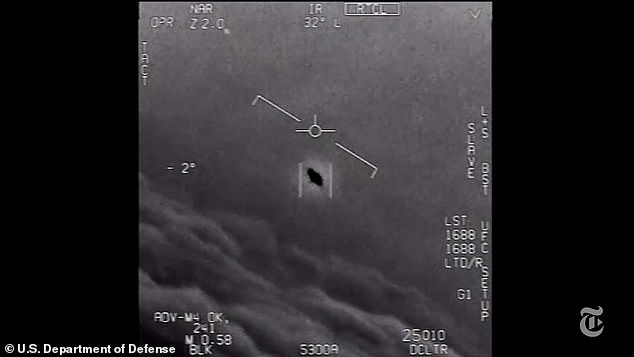
One case that piqued West’s interest is that of the footage taken by Navy F/A-18 Super Hornet pilot Ryan Graves. West wants to review the original video files himself to better understand his data.
West, who often relies on the facts surrounding the video to discredit the events recorded, reviewed the video and tried to figure out the camera rotation and lens flare. Still, he got no answers.
West now hopes to gain access to the original radar data rather than the government-published analysis so he can recreate the phenomenon and rule out any reasonable explanation.
As part of his approach, West uses multiple tools, including FlightAware, Flight Radar 24 and Invisor, an app that provides information about videos, audio and photos, such as the resolutions and the date they were taken.
But his greatest asset is Sitrec, a tool he designed himself that stands for “situational recreation,” which integrates flight data, video and satellite imagery to paint a complete picture, he said. Popular mechanics.
“You have to be very careful what you look at… to me, that’s the first step in investigating a case,” West, who has investigated about 1,000 UFO cases, told the outlet.
Last month, the former video game programmer saw a white, elongated object from the window of an airplane while flying to Pasadena and took a quick video of it.
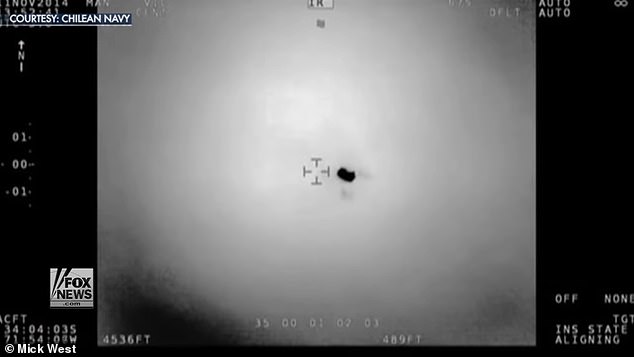
“It’s not intuitive, and if you don’t dig too deep into it, you’ll get it wrong,” said West, who programmed Tony Hawk’s Pro Series games.
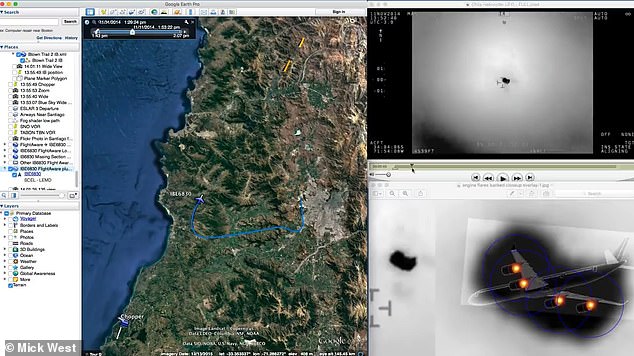
“It may be very difficult to understand… but you have no other choice,” he added (Photo: Sitrec)
He thought it was just another plane (a conclusion he would be correct in), but found himself needing to investigate the matter himself, he told Popular Mechanics.
When he got to his hotel room, he used Photoshop to take a closer look at the image and downloaded the GPS tracks for his flight and a few others in the FlightAware.com area.
For West to find an answer, he must look at simultaneous events and see how they fit into the bigger picture.
His plane was not the only one in the air, so he had to monitor other flight paths, as well as weather phenomena and satellite data.
He also looks closely at the angle of the video. In his case, he knew that the video he had taken was several thousand feet above the ground and that the object was below him.
He used Flight Aware 24 to configure where other nearby planes were so he could “figure out what’s actually in the air at any given time,” he told Popular Mechanics.
West then zoomed in on his own flight and found the exact location of his plane when he took the video.
“I knew I was sitting on the right side of the plane,” he told the outlet.
The map showed him a “possible contender”: a plane that had taken off from Los Angeles’ Van Nuys Airport.
“That matches what we see in the video,” he told Popular Mechanics.
He then used Sitrec (which an unnamed organization paid him to develop and make available to the public) to point his plane’s camera directly at where the other plane was traveling.
“I set the camera to point from my plane towards the other two. One of them was an exact match. It was a small Cessna,” he told the outlet. “This confirms that that was the plane I was looking at.”
An Unidentified Anomalous Phenomenon (UPA) — the term that replaced UFO in 2023 — that piqued West’s interest appeared in a video the Chilean Navy captured of a black blob leaving streaks behind it in 2014, he told Popular Mechanics.
The Chilean military investigated the images for about two years and boldly determined that they were aliens.
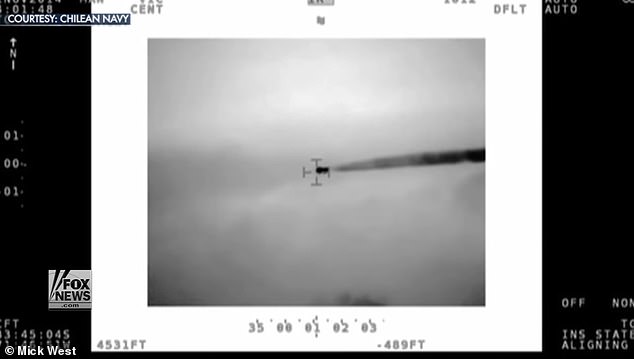
He determined that the black spot seen by Chilean authorities was just a plane that had just taken off from Santiago airport, and the reason it appeared black in the images the Navy had captured was because it was taken with a thermal camera and the plane was warmer than the surrounding area.
However, West, thanks to Sitrec, came to a more reasonable conclusion and documented his research in YouTube.
He determined that the black spot was a plane that had just taken off from Santiago airport. He said the reason it appeared black in the images captured by the Navy was because it was taken with a thermal camera and the plane was warmer than the surrounding area.
“It’s not intuitive, and if you don’t dig too deep into it, you’ll get it wrong,” West, who programmed Tony Hawk’s Pro Series games, told the outlet.
As for the contrails recorded by the Navy, he explained that these were simply the plane’s engines leaving condensation trails.
West said the Chilean Navy also made a mistake in its flight path.
‘They thought they were looking at an object moving from left to right.
“In fact, what they were seeing was this plane, just out of Santiago airport, that had made a loop to gain altitude over the mountains,” he said.
Using his program, he was able to successfully simulate the aircraft’s movements by taking into account the camera angle and comparing it with flight records.
West believes his days as a video game programmer helped prepare him for a life of debunking UFOs, as he spent “an inordinate amount of time on this trivial little thing, this intractable little bug that’s causing this problem” during his previous career.

West believes his days as a video game programmer helped prepare him for a life of debunking UFOs, as he spent “an inordinate amount of time on this trivial little thing, this intractable little bug that’s causing this problem” during his former profession.
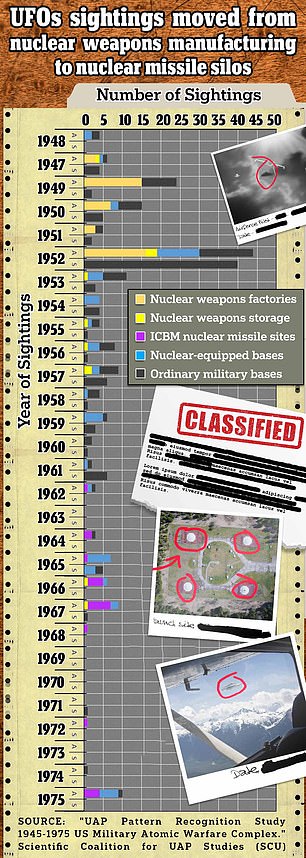
UFO sightings over America’s nuclear arsenal seemed to divert its interest from bomb-making to bomber silos and bases as the Cold War arms race escalated (above)
“It can be very difficult to understand… but you have no choice,” he told Popular Mechanics.
He believes debunking claims of alien sightings has the same rigor as programming a game, and coupled with his fascination with conspiracy theories, it ignited his passion for investigating UAPs.
However, other experts remain convinced that UFO activity is real and apparently has some connection to nuclear sites.
Former head of the Advanced Aerospace Threat Identification Program, Lue Elizondo, agreed that “there seems to be a lot of correlation” between UFO sightings and nuclear sites.
And independent researcher Robert Hastings, who has been working to achieve full disclosure of UAP activity by the government, said in 2010: “Declassified U.S. government documents and testimony from former or retired U.S. military personnel confirm beyond a shadow of a doubt the reality of continued UFO incursions at nuclear weapons sites.”
Now, new research — in the form of three studies led by retired U.S. Air Force Staff Sergeant Larry Hancock and a data analyst affiliated with Harvard’s UFO-hunting Galileo Project, Ian Porritt — shows that not only has there been unusual activity around nuclear weapons and facilities, but that it has changed over the years.
Initially apparently interested in nuclear weapons production, UFO sightings later surfaced around silos and bomber bases.
“You saw this interest in silos when they were being installed before activity slowed down,” Porritt previously told DailyMail.com.
Eerily similar to these encounters are cases of UAP following fighter aircraft that were revealed by the UAP Task Force, including a giant “Tic Tac” UFO witnessed by veteran Navy fighter pilot Commander David Fravor in 2004.
Fravor’s co-pilot, Chad Underwood, witnessed the “perfectly white” wingless oblong captured on flight video from his cockpit.

